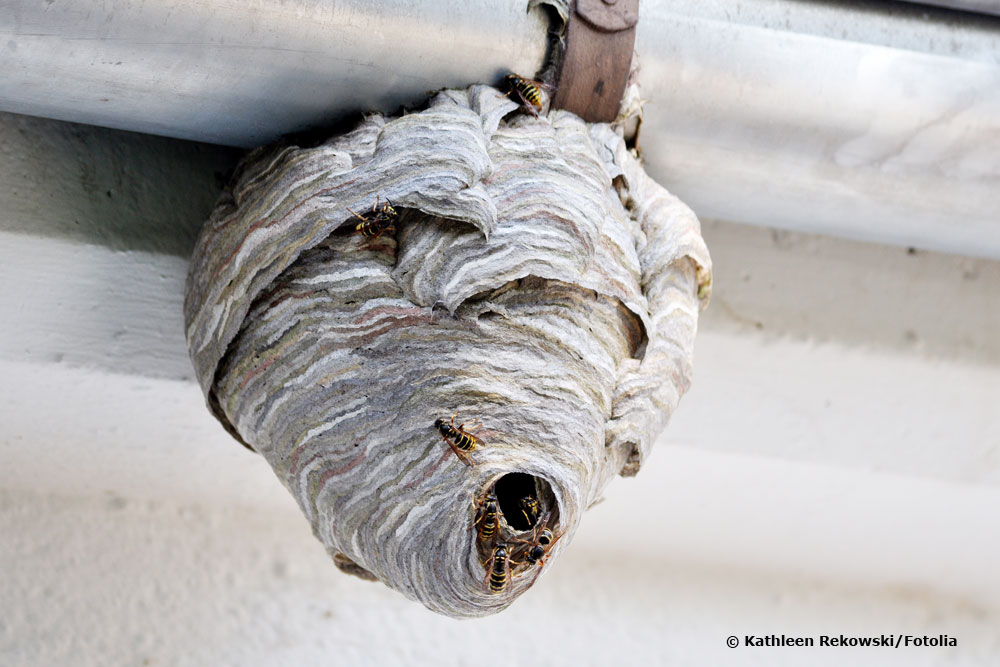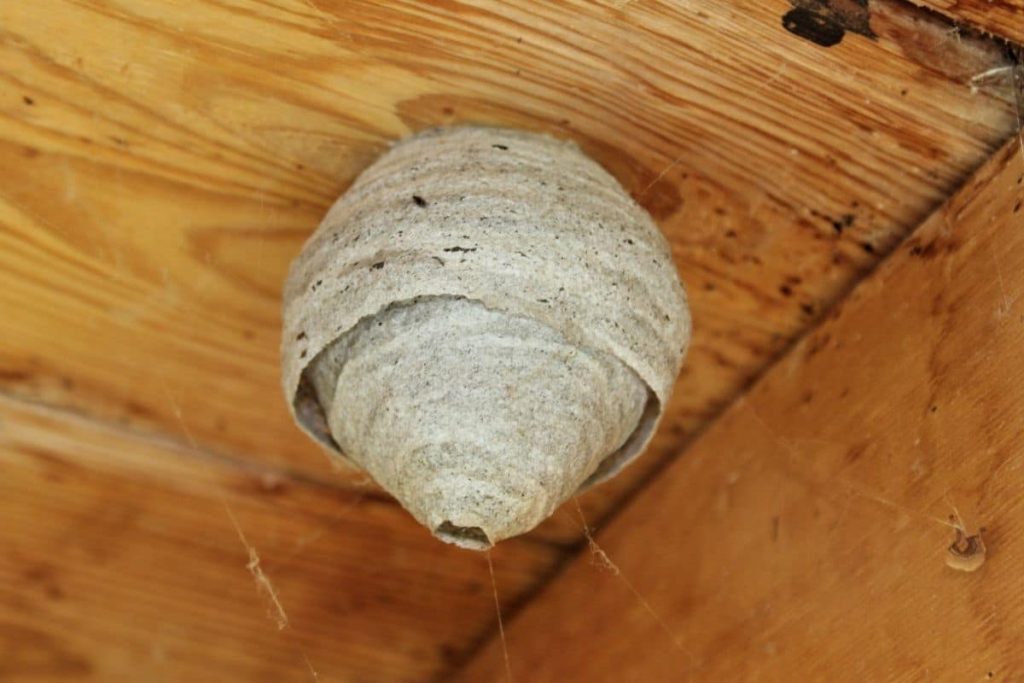Last updated on October 23rd, 2023 at 08:55 pm
Everyone knows wasps – as a nuisance, as supposedly “dangerous” insects or in a similar view. But did you know that each colony of these fascinating animals builds a highly complex, technically sophisticated dwelling? We provide information about the general structure of a wasp nest.
To the point
- location, size and construction varies from wasp species to wasp species
- a wasp nest is only used for one year
- chewed dead wood mixed with saliva is used as building material
- wasp nests have air pockets, a kind of natural air conditioning system
The location
Even before the actual “how”, the first question with wasp nests is “where”. This is because the location directly influences the construction method and the intended functions of the wasp’s dwelling. In general, wasp species prefer two different locations:

Dark
Protected from rain
e.g. in sheds, eaves, tree hollows, etc.
Here a particularly high protection of the brood is achieved both against weather influences, but also against predators.
other species – locations with the following characteristics:
- limited weather protection
- well ventilated
- mostly free-hanging or only “leaned on
- e.g. on tree trunks, under branches, etc.
This positioning allows wasps particularly easy access to the nest. At the same time, possible heating is prevented by the good ventilation. In addition, the good ventilation quickly removes moisture and helps to prevent the settlement of fungi, germs or other pathogens.
Contents
The building material
Anyone who has had the opportunity to look at a wasp nest or its remains up close, or even touch them, will first of all notice the extreme lightness of the material. Both visually and haptically, it is very reminiscent of the papier-mâché that we all molded into lanterns or other structures as children. And in fact, it is a closely related building material. This is because the wasps use dead, partially rotten wood and mix the chewed fibers with their saliva to form a malleable mass that is both very tough and light when dry. From a purely technical point of view, the animals ultimately produce a composite material from a natural adhesive and cellulose fibers – the wood. Depending on the wasp species and the wood found, the color can vary between light gray, dark gray and even brown.
Note: Since wasp nests are created from an organic material, they are comparatively susceptible to fungi, parasites and other harmful pathogens. Therefore, wasps use a nest for only one season at a time, until the wasp state dies anyway in the fall. Each young queen begins building a new dwelling when she establishes her state in the spring.
The construction
When constructing their dwellings, wasp colonies prove to be adept builders and innovative designers. Regardless of the exact design depending on the location and wasp species, a wasp nest always exhibits some basic construction principles:
- spherical to drop-shaped basic form
- strongly varying, organic expression of this basic form
- interior completely filled with honeycombs except for aisles
- inside very regular, uniform arrangement of honeycombs
- honeycombs as breeding places and for high constructive stability
- construction and growth mostly from spring to final size in early summer
Constructive details
In addition to the general structure, a wasp nest has some constructional peculiarities which, despite their apparent simplicity, turn out to be real feats of constructive efficiency:
The entrance and exit hole
The entrance and exit hole of each nest is located on the underside. This prevents rain from entering and reduces exposure to moisture to a minimum. In addition, the outer layers of the nest hut are extended beyond the entrance opening as a drip edge. This also prevents the capillary rise of rainwater on the inside of the nest to the sensitive interior.

Air pockets
The nest structures of the common wasp and the European wasp have semicircular air pockets on the outer shell that are open at the bottom. They are integrated into the layers of the shell and serve as temperature buffers. This effectively prevents both summer overheating and excessive cooling, despite the simplest of measures. So, on closer inspection, the construction of a wasp nest seems as simple as it is ingenious.
Frequently asked questions
Why is a wasp nest waterproof in spite of papier-mâché?
Although the wasps’ building material is organic and contains a high proportion of plant fibers, the wasps’ saliva and the comparatively dense surface make it very insensitive to water. However, a permanently high level of humidity will still cause problems for the nest over time. For this reason, many species seek locations with at least moderate weather protection.
Can the wasp species be identified from the wasp nest?
Yes, the typical large nests, which are mainly built dark and hidden, often originate from the particularly annoying species European wasp and community wasp. Small nests, no larger than a fist, which can be found in various places in the house and garden, usually belong to other, harmless species.


